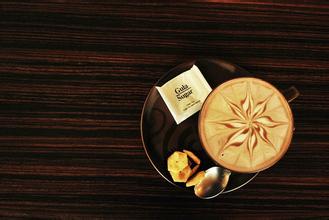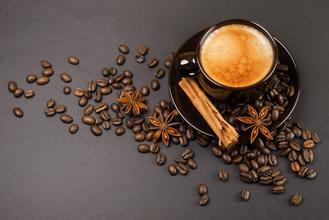Burundi coffee production area up to how many meters above sea level is highland coffee
Introduction to the altitude of coffee
At high altitudes, the special microclimate breeds high-quality coffee beans with its perfect match of temperature, sunshine and rain. The colder temperature at night also slows down the ripening time of coffee berries, making the coffee flavor fuller.
Low altitude: Robbins coffee usually grows at low elevations. The fruit is bigger and ripens faster than Arabica coffee, but it is less dense. Robart coffee trees are easier to cultivate and are more resistant to disease. Robbins coffee is grown in almost half of the world because it is easier to grow, but it tends to have a lower flavor.
Coffee bean density: how does the altitude of the coffee growing area affect the quality of coffee? At high altitudes, warmer temperatures during the day and colder temperatures at night can slow the growth of coffee berries. The longer growth time of coffee trees means that coffee beans have more time to form rich and complex flavor curves. What is the result of growing coffee in the highlands? Coffee beans are harder, smaller, and have a rich and complex flavor. The higher the density of coffee beans, the greater the baking depth they can withstand.
The coffee tree is an evergreen cotyledon plant native to Ethiopia and belongs to the Coffee genus of the Rubiaceae family in botany, with a height of up to 10 meters, while artificial growers are only two to four meters tall due to pruning. Coffee will probably seed in three to four years, and the yield will decrease after 20 to 25 years, but some coffee trees will still bear fruit after a hundred years of life. The branches of the coffee tree grow opposite and grow horizontally or drooping, while the leaves of the coffee tree are opposite on the short-diameter branches. The two main species are Arabica (Coffee Arabica) and Robasda (Coffee Robusta). The leaves of Arabica are about 15 centimeters long. Robasda's leaves are long, soft oval or pointed, and the color is bright green. This is a romantic story. Gabriel, a French naval officer on the island of Matinique, circa 1720 or 1723. Mathieu. De. As he was about to leave Paris, Klee managed to get some coffee trees and decided to take them back to Martinique. He had been taking good care of the saplings and keeping them in a glass box on the deck to protect them from sea water and heat. De. Klee was threatened by pirates during the journey, experienced the storm, and the jealousy and destruction of his fellow ship, and even saved his own water to water the sapling when drinking water was scarce. His coffee tree finally took root in Martinique and got its first harvest in 1726. It is said that by 1777 Martinique had 18791680 coffee trees, Gabriel. Mathieu. De. Klee played an important role. Gabriel. Mathieu. De. Klee died in Paris on November 30, 1724, and in 1918 a monument was built for him at the Ford Botanical Garden in Martinique, France.

Important Notice :
前街咖啡 FrontStreet Coffee has moved to new addredd:
FrontStreet Coffee Address: 315,Donghua East Road,GuangZhou
Tel:020 38364473
- Prev

Guji, Ethiopia G1 washed sun-cured coffee beans flavor description treatment of variety characteristics
Ethiopian coffee flavor description introduces Ethiopia's Yirgacheffe coffee, although petite, it is gentle and delicate, sweet and lovely. As the hometown of coffee, thousands of years of planting history and processing tradition in Ethiopia have created high-quality washed Arabica beans. Light baking has a unique sweet aroma of lemon, flower and honey, with soft acidity.
- Next

Almond flavor description of Burundian Rocasta coffee beans characteristic varieties of grinding method
Burundian coffee bears a striking resemblance to neighboring Rwanda, where coffee from the two countries is often confused. Burundian coffee is mainly grown in bourbon, with traditional wet processing of coffee cherries. Its boutique coffee is characterized by elegant sweetness and bright citrus aromas. This batch belongs to the Bourbon species micro-batch [Bulondi Champion processing Plant] located in Kajan.
Related
- Detailed explanation of Jadeite planting Land in Panamanian Jadeite Manor introduction to the grading system of Jadeite competitive bidding, Red bid, Green bid and Rose Summer
- Story of Coffee planting in Brenka region of Costa Rica Stonehenge Manor anaerobic heavy honey treatment of flavor mouth
- What's on the barrel of Blue Mountain Coffee beans?
- Can American coffee also pull flowers? How to use hot American style to pull out a good-looking pattern?
- Can you make a cold extract with coffee beans? What is the right proportion for cold-extracted coffee formula?
- Indonesian PWN Gold Mandrine Coffee Origin Features Flavor How to Chong? Mandolin coffee is American.
- A brief introduction to the flavor characteristics of Brazilian yellow bourbon coffee beans
- What is the effect of different water quality on the flavor of cold-extracted coffee? What kind of water is best for brewing coffee?
- Why do you think of Rose Summer whenever you mention Panamanian coffee?
- Introduction to the characteristics of authentic blue mountain coffee bean producing areas? What is the CIB Coffee Authority in Jamaica?

